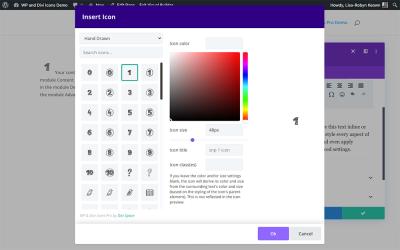If you’re a WordPress enthusiast or developer, you know that customizing your site often involves tweaking code. But how do you ensure that your changes work perfectly without breaking your site? That’s where page code testers come into play. These handy tools let you experiment with HTML, CSS, and JavaScript snippets safely before pushing them live. Whether you’re adding a new feature or fixing a bug, testing your code in a controlled environment can save you time and headaches. Today, we’ll explore some of the best free WordPress page code testers that you can start using right now to make your development process smoother and more efficient.
Why Using Free WordPress Page Code Testers Is Important

Using free WordPress page code testers is a game-changer for anyone working on website customization. Here’s why they’re so essential:
- Prevents Breakage: Testing code in a sandbox environment ensures your live site stays safe from errors that could cause downtime or layout issues.
- Speeds Up Development: Instead of editing directly on your site and risking mistakes, you can experiment freely and see instant results.
- Cost-Effective: Since these tools are free, you don’t need to invest in expensive software or hire professionals just to test code snippets.
- Learning Opportunity: For beginners, trying out different codes in a safe space helps build confidence and understanding of how various elements work together.
- Compatibility Checks: Ensuring your code works across different browsers and devices becomes easier when tested in a dedicated environment.
In short, free WordPress page code testers are an invaluable resource for improving your site’s design, functionality, and overall performance without risking your live environment. They empower you to experiment, learn, and refine your skills—making your website not just better but also more resilient. Now, let’s dive into some of the top free tools you should start trying today!
3. Top Free WordPress Page Code Testing Tools

When it comes to managing your WordPress site, ensuring your pages are error-free and optimized is crucial. Luckily, there are some fantastic free tools out there that make testing your page code a breeze. Let’s dive into some of the most popular and reliable options you should definitely try.
WPCodeChecker
WPCodeChecker is a handy plugin that allows you to quickly analyze your page’s HTML, CSS, and JavaScript code directly within your WordPress dashboard. It highlights errors and suggests fixes, saving you time and frustration. Plus, it’s super user-friendly, making it perfect for both beginners and experienced developers.
W3C Markup Validation Service
The W3C Validator is a classic, trusted tool used by web developers worldwide. Simply enter your page URL or upload your HTML file, and it will scan your code for errors and compliance issues. It’s an excellent way to ensure your code adheres to web standards, which can improve your site’s performance and accessibility.
CodePen
CodePen is a popular online code editor that lets you write, test, and preview your HTML, CSS, and JavaScript snippets. While it’s often used for front-end experimentation, you can also use it to test specific page sections or scripts before deploying them to your WordPress site. Its live preview feature makes it easy to see the results instantly.
Online HTML Validator
This simple yet effective tool allows you to paste your page code and check for errors in real-time. It’s lightweight and straightforward, making it perfect for quick tests when you’re troubleshooting issues or trying out small code snippets.
GTmetrix & Google PageSpeed Insights
While primarily known for performance testing, both GTmetrix and Google PageSpeed Insights also analyze your page’s code for optimization opportunities. They provide actionable suggestions to improve load times, which often involve cleaning up or optimizing your code.
4. Features to Look for in a WordPress Page Code Tester
Not all code testing tools are created equal. When choosing the right one for your WordPress site, it’s important to consider certain features that can make testing easier, faster, and more effective. Here’s what you should be on the lookout for:
- Ease of Use: The interface should be intuitive, especially if you’re new to coding. Look for tools that don’t overwhelm you with complex options.
- Real-Time Feedback: Instant preview and error highlighting help you identify issues quickly without needing to refresh or run multiple scans.
- Comprehensive Error Reporting: The tool should specify what’s wrong and suggest possible fixes, making troubleshooting straightforward.
- Support for Multiple Languages: Ideally, it should test HTML, CSS, and JavaScript, since these are the core languages used in WordPress pages.
- Validation Against Web Standards: Ensuring your code complies with standards like W3C helps with browser compatibility and accessibility.
- Integration Capabilities: Some tools can integrate directly into your WordPress dashboard or code editor, streamlining your workflow.
- Performance Insights: Beyond syntax errors, look for features that analyze your code for efficiency and optimization opportunities.
- Free and No Sign-up Required: Especially if you’re just testing, it’s helpful to use tools that are free and don’t require lengthy registration processes.
Choosing the right tools with these features in mind can help you maintain a healthy, fast, and error-free WordPress site. Don’t be afraid to try out a few options to see which one fits your workflow best!
5. How to Use Free WordPress Page Code Testers Effectively
So, you’ve decided to give those free WordPress page code testers a try — great choice! But to really get the most out of them, it helps to know a few tips on how to use these tools effectively. Think of these testers as your friendly helpers that catch errors before they become headaches on your live site.
Step 1: Choose the Right Tool — Not all code testers are created equal. Some are better suited for HTML, CSS, or JavaScript. Look for tools that support the specific code you’re working with. Popular options include W3Schools Tryit Editor, JSFiddle, or CodePen. These platforms are user-friendly and versatile.
Step 2: Break Down Your Code — Instead of testing an entire webpage at once, try testing smaller chunks of code. For example, test your CSS snippets separately to see how they affect layout, then test JavaScript functions individually. This makes debugging easier and faster.
Step 3: Use Sample Data — When testing forms or dynamic content, use sample data to simulate real user input. This helps you see how your code performs under real-world scenarios.
Step 4: Check Compatibility — Different browsers can interpret code differently. Use your tester to preview how your code behaves across various browsers and devices. Some tools even let you emulate different environments, which is super handy.
Step 5: Read Error Messages Carefully — When your code doesn’t work as expected, pay close attention to error messages or warnings. They often point directly to the problem — maybe a missing semicolon, a typo, or a deprecated function.
Step 6: Iterate and Improve — Testing is an iterative process. Make a change, test again, and refine. Over time, you’ll develop a better understanding of how your code behaves and how to optimize it.
Tip: Always save a copy of your original code before testing. It’s easy to get carried away and make changes that you might not want to keep. Keeping backups ensures you can revert if needed.
By following these tips, you’ll turn those free code testers into your secret weapons for creating beautiful, functional WordPress pages. They’re simple, accessible, and — best of all — free. Use them wisely, and you’ll save yourself time, frustration, and maybe even a few headaches along the way!
6. Benefits of Testing Your WordPress Pages with Free Tools
Now, you might be wondering, “Why bother testing my WordPress pages at all?” Well, there are plenty of good reasons, especially when you’re using free tools that are easy to access and use. Let’s dive into some of the biggest benefits.
- Catch Errors Early — Free code testers help you identify mistakes in your code before they make it onto your live site. That means fewer broken layouts, broken functionality, or unexpected bugs that can frustrate visitors or harm your site’s reputation.
- Save Time and Money — Fixing issues before publishing is much faster and cheaper than troubleshooting after your site goes live. Free tools allow you to quickly experiment and troubleshoot without needing expensive software or hiring a developer.
- Learn and Improve Your Skills — Using these testers isn’t just about fixing problems; it’s also a fantastic way to learn. Seeing how code behaves in real-time helps you understand what works and what doesn’t, boosting your coding confidence.
- Test Responsiveness and Compatibility — With a free tester, you can preview how your code looks across different browsers and devices. This ensures your visitors have a good experience, no matter how they access your site.
- Experiment Safely — Want to try out new ideas or advanced features? Free code testers let you experiment without risking your live website. Play around freely, learn, and only deploy when you’re confident everything works perfectly.
- Improve Site Performance — Well-tested code is leaner and more efficient. By catching and fixing unnecessary or problematic code early, you can keep your WordPress pages loading fast and running smoothly.
All in all, using free WordPress page code testers is a smart move for anyone serious about maintaining a high-quality website. They democratize code testing, making it accessible to everyone — whether you’re a seasoned developer or just starting out. Plus, the best part? They’re completely free! So, why not take advantage of these handy tools to make your WordPress site better, faster, and more reliable?
Conclusion and Recommendations for WordPress Developers
Choosing the right free WordPress page code tester is essential for streamlining your development process and ensuring your website functions flawlessly. Based on the features, user reviews, and versatility, several tools stand out as top contenders. These testers not only help you identify and fix issues quickly but also enhance your overall workflow by providing real-time feedback and debugging capabilities.
When selecting a code tester, consider the following recommendations:
- Compatibility: Ensure the tool supports the latest WordPress versions and popular plugins.
- User Interface: Opt for testers with intuitive, user-friendly interfaces to maximize efficiency.
- Features: Look for features like live preview, error highlighting, and code suggestions.
- Community Support: Choose tools with active communities or developer support to troubleshoot issues effectively.
Some recommended free tools include WP Debugging, Query Monitor, and Code Snippets. These tools help you test PHP, CSS, and JavaScript code snippets directly within your WordPress environment, reducing the need for external editors and minimizing errors.
In conclusion, integrating a reliable free code tester into your development workflow can dramatically improve your productivity and the quality of your WordPress sites. Experiment with different tools to find the one that best aligns with your needs and project requirements, and always keep your tools updated to leverage the latest features and security patches.


